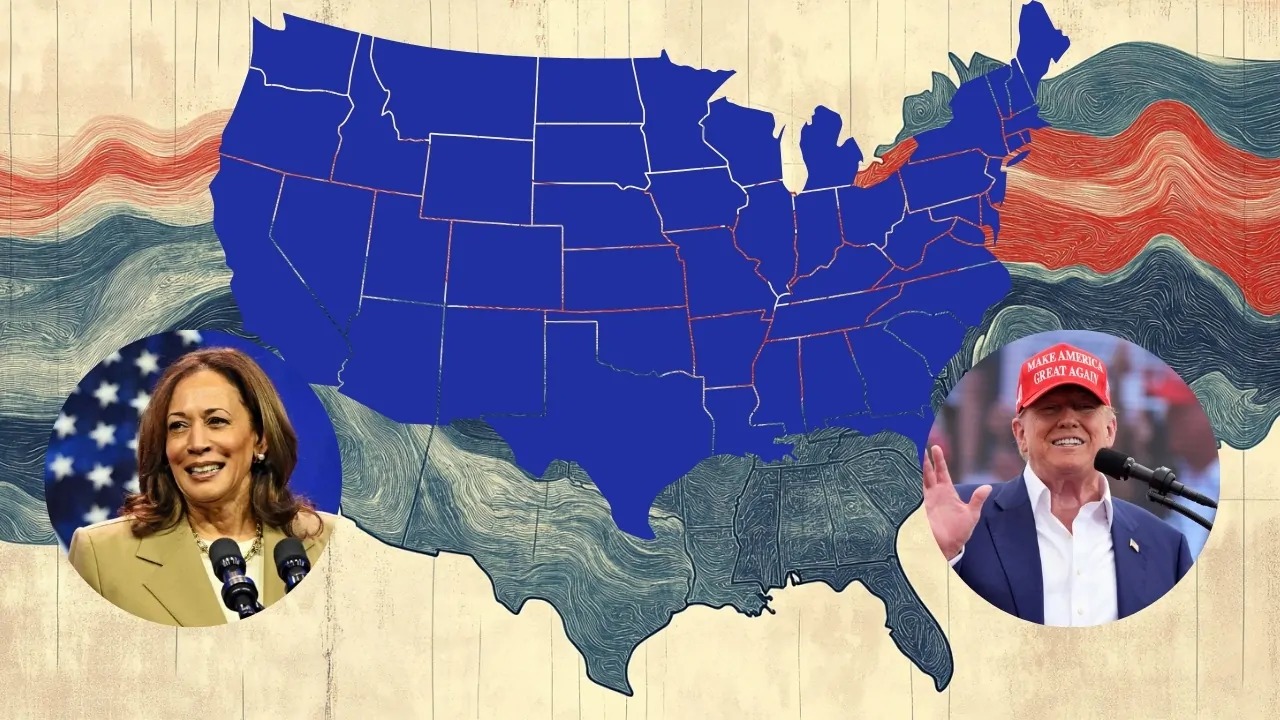Swing states, also known as battleground states or purple states, play a critical role in U.S. presidential elections. These states include Arizona, Georgia, Michigan, Pennsylvania, and Wisconsin. Each election cycle, their voting trends can shift, making them unpredictable and highly coveted by both major political parties.
In recent years, these swing states have seen significant changes in their political alignments. For instance, Arizona, which favored Republican Mitt Romney by 9 points in 2012, shifted towards the Democrats and handed Joe Biden a narrow victory in 2020.
Similar trends are evident in Georgia, Pennsylvania, and other key states, reflecting demographic changes and evolving voter priorities.
This dynamic nature makes swing states a focal point for campaign strategies, media attention, and voter mobilization efforts.
Recent Trends in Swing State Dynamics

- Arizona
- Georgia
- Michigan
- Nevada
- North Carolina
- Pennsylvania
- Wisconsin
Arizona and Georgia have emerged as key battlegrounds, contrasting their more solidly Republican pasts.
Data from the 2020 election shows these states trending Democratic, impacting strategies for both parties. Meanwhile, New Mexico and Iowa, previously considered swing states in 2000 and 2004, have stabilized toward Democratic and Republican preferences, respectively according to USA Facts.
Voting rules have also been adapted post-2020. For instance, eight swing states have changed their policies. These adjustments could influence election outcomes, making it crucial for campaigns to stay informed on new regulations. Changes include mail-in voting procedures and voter ID requirements.
The Cook Political Report lists states as still competitive for the 2024 race. These include some usual suspects like Michigan and Pennsylvania, as well as Texas, which has seen increasing Democratic competitiveness.
| State | 2000-2004 Swing Status | 2020-2024 Swing Status |
|---|---|---|
| Arizona | Not a Swing State | Swing State |
| Georgia | Not a Swing State | Swing State |
| New Mexico | Swing State | Not a Swing State |
| Iowa | Swing State | Not a Swing State |
In recent years, swing states have shifted significantly due to demographic changes and political realignments.
Definition of Swing States
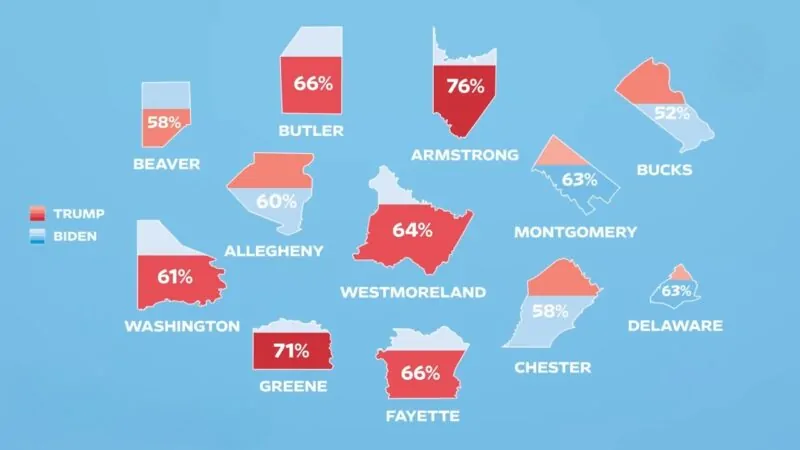
Swing states do not consistently vote for a single party. Their electoral votes can be won by either major political party in any given election.
They exhibit highly competitive races. For instance, in the 2020 election, some states were decided by margins of three percentage points or less.
Traditional swing states include Florida, Ohio, and Pennsylvania.
However, new states have emerged as battlegrounds in recent elections, such as Arizona and Georgia.
Characteristics of Swing States
- Voter demographics are evenly split between parties.
- Historical voting patterns that show fluctuating support.
- High levels of campaign activity and spending from both parties.
Why Swing States Matter
- They often have a significant number of electoral votes.
- Candidates focus their campaigns and policies to appeal to voters in these states.
- Winning these states can be decisive for securing the presidency.
Historic Overview of Swing States
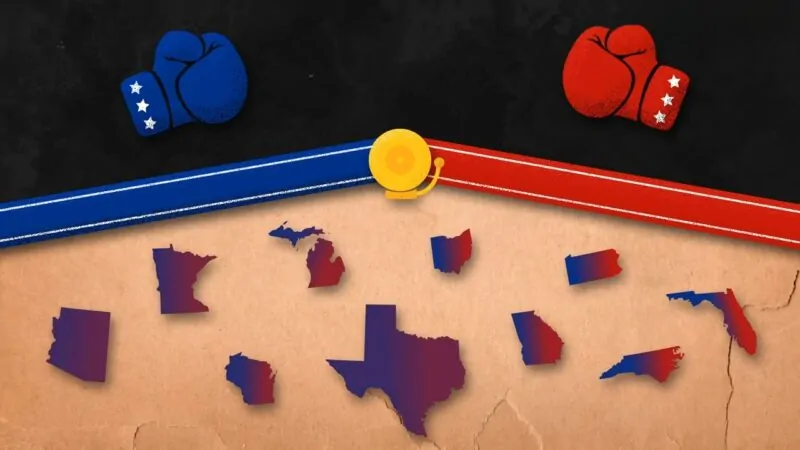
- 1980s-1990s: The concept of swing states began to gain prominence during the elections of the late 20th century. For example, in 1988, states like Ohio and Florida were seen as critical for George H.W. Bush’s election.
- 2000s: The 21st century saw states such as Florida, Ohio, and Pennsylvania frequently deciding the outcome of presidential elections. The 2000 election between George W. Bush and Al Gore highlighted the importance of these states, with Florida becoming the focal point due to its razor-thin margin.
- 2010s: During this decade, new states started emerging as important battlegrounds. For instance, Barack Obama’s campaigns in 2008 and 2012 saw increased attention to states like North Carolina and Virginia.
- 2020: The 2020 election brought states like Arizona and Georgia into the spotlight. These states demonstrated how demographic changes and shifting political landscapes could alter their swing state status.
Factors Influencing Changes
Now let us see what are the changes that made the changes that defined what are the 7 swing states for the 2024 elections.
Demographic Changes
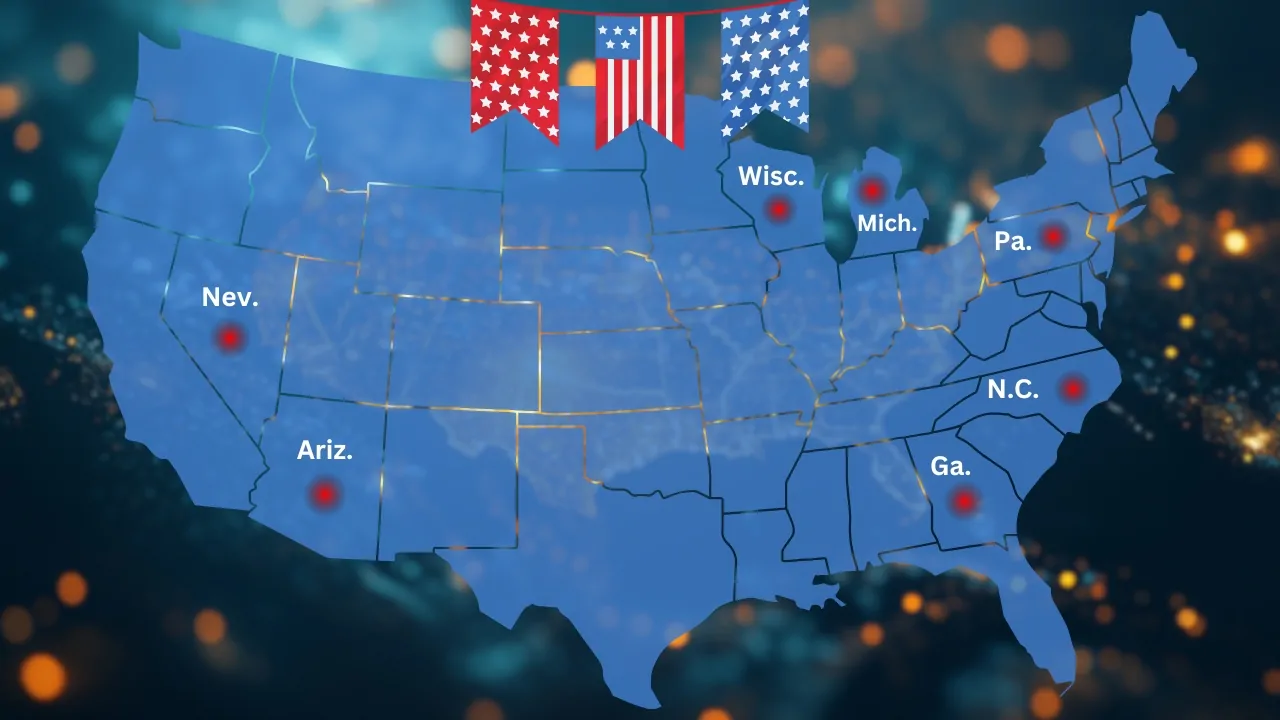
Population movements and shifts significantly impact voting trends. For instance, the influx of younger, more diverse populations into states like Arizona and Georgia has affected traditional voting patterns, making them swing states.
Economic Factors
Economic conditions play a critical role. States experiencing economic distress or growth may see shifts in voter priorities. For example, states with declining industries may lean towards candidates promising economic revitalization.
The influence of federal contracts, like those recently awarded to major defense players, can shift economic conditions in key regions, potentially swaying voter priorities in upcoming elections.
Voting Rule Changes
Changes in voting laws can also influence swing state dynamics. For instance, key changes in voting policy in eight swing states could significantly impact election outcomes.
Campaign Strategies

Targeted advertising, grassroots campaigns, and frequent candidate visits can sway undecided voters, making these states more competitive.
Historical Context
Historical voting patterns provide a backdrop.
States like Wisconsin, Michigan, and Pennsylvania have a history of swinging between parties, influenced by both longstanding and emerging issues.
Poll Data
Recent polling data also sheds light on current trends, which made it possible for us to know what are the 7 swing states for the following elections.
A New York Times/Siena College poll of voters in Pennsylvania, Michigan, and Wisconsin indicates extremely close races, highlighting the complexity of voter behavior.
Furthermore, a recent Al-Jazeera poll talks about what we can expect in the elections in November.
Analysis of Past Elections
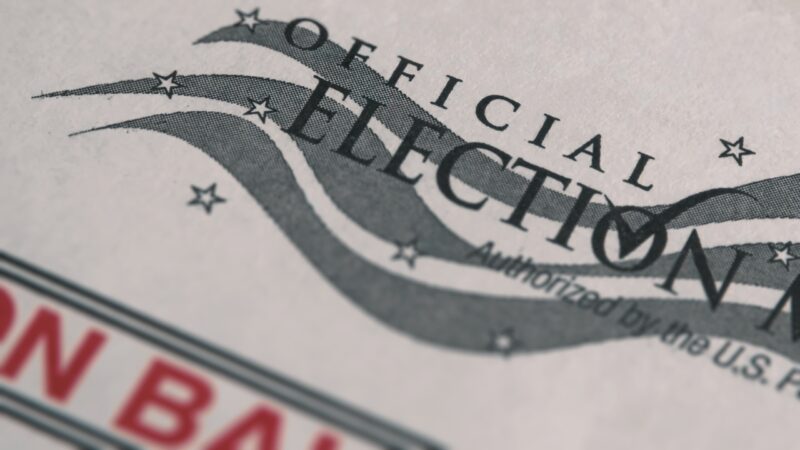
Analyzing past presidential elections reveals significant trends in swing states. Swing states, also known as battleground states, determine the direction of elections due to their undecided nature.
Historically, states like Ohio and Florida have often played pivotal roles.
In the 2000 election, Florida’s tight vote count led to a contentious recount, ultimately decided by the Supreme Court. Bush’s victory hinged on a mere 537 votes in Florida, emphasizing the importance of every vote in swing states.
The 2008 and 2012 elections saw Ohio become a crucial battleground with Barack Obama securing narrow victories that helped him secure the presidency. The state’s diverse electorate mirrored national demographics, making it a key predictor of the election outcome.
In 2016, Donald Trump won by flipping traditionally Democratic states like Pennsylvania, Wisconsin, and Michigan. These states hadn’t voted Republican in several election cycles, highlighting a significant shift in voter sentiment.
Joe Biden’s 2020 win was marked by reclaiming Pennsylvania, Michigan, and Wisconsin while adding Arizona and Georgia to the Democratic column. Narrow victories in these states demonstrated the delicate balance of power.
Changes in voting rules post-2020 have further impacted swing states. According to the Voting Rights Lab, these modifications could significantly influence future outcomes.
Key swing states like Pennsylvania, Florida, and Arizona require careful attention due to their historical and current significance. Understanding past trends in these states provides insight into their potential future impact on U.S. presidential elections.
The Role of Swing States in the Electoral College
Swing states, also called battleground states, have significant sway in U.S. presidential elections.
In these states, political competition is fierce because neither major party has overwhelming support. The outcome hinges on small changes in voter preferences.
The Electoral College system allocates 538 votes across the 50 states and Washington, D.C. Each state gets votes based on its congressional representation.
For example, Michigan, Pennsylvania, and Wisconsin have pivotal roles due to their mixed voter demographics and historical voting patterns. Winning these states often determines the overall election outcome.
In 2020, Arizona, Georgia, Michigan, Pennsylvania, and Wisconsin were decided by narrow margins, making them critical targets for both parties. Electoral strategies focused heavily on these areas.
Due to their unpredictable nature, swing states receive more campaign visits and advertising. Candidates tailor their messages to win over undecided voters in these key states.
| State | Electoral Votes |
|---|---|
| Arizona | 11 |
| Georgia | 16 |
| Michigan | 16 |
| Pennsylvania | 20 |
| Wisconsin | 10 |
Small shifts in voter turnout or preferences in these states can tip the balance of the election, emphasizing their vital role in the Electoral College system.
Impact of Swing States on Campaign Strategies
If we know what are the 7 swing states, it is not surprising to see how the campaigns of both parties reflected on the local situation.
The importance of swing states heavily influences campaign strategies. Candidates allocate significant resources to these battleground regions to secure their electoral votes.
Swing states often see a high concentration of campaign visits, rallies, and events. It is to sway undecided voters and ensure high voter turnout.
Companies disproportionately spend advertising budgets in these areas. For example, they allocate millions to television and digital ads targeting swing-state voters.
- Targeted Messaging: Campaigns tailor their messages to address local issues and concerns specific to each swing state.
- Ground Game: Efforts include door-to-door canvassing, phone banking, and voter registration drives.
- Data Analytics: Advanced data analytics are used to identify and target potential swing voters.
Candidates also adapt their policy platforms to appeal to demographics prevalent in swing states. Issues such as healthcare, the economy, and education are often emphasized based on regional priorities.
Campaign Resource Allocation
| State | 2020 Spending (Millions) |
|---|---|
| Arizona | $75 |
| Pennsylvania | $95 |
| Wisconsin | $70 |
Swing states remain critical, shaping the campaign strategies of presidential candidates as they strive to secure these pivotal electoral votes.
FAQs
Related Posts:
- Exoskeletons Explained - What They Are and How They Work?
- How the US Army’s Night Vision Technology Changed…
- UAS, Drones, and UAVs - How Do They Differ?
- The Hidden Rules of Military Life - What They Don’t…
- Military Time - How to Read, Convert and Use
- Are Soldiers Spending Too Much Time on After Action Reports?

